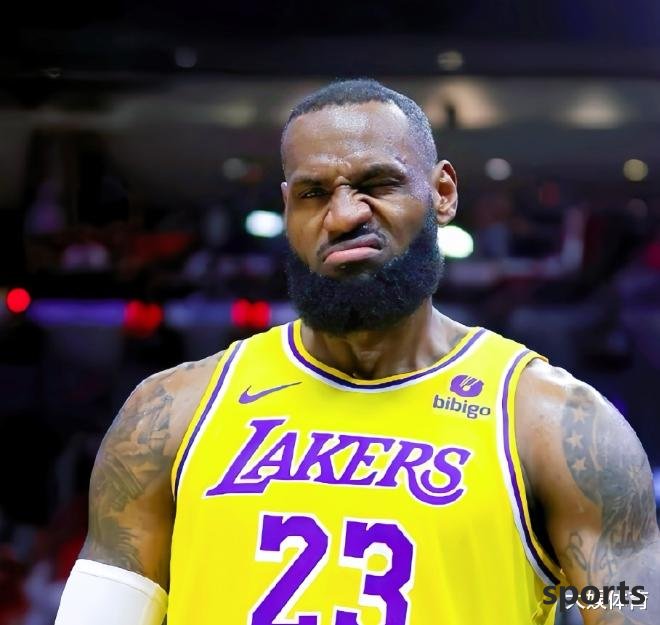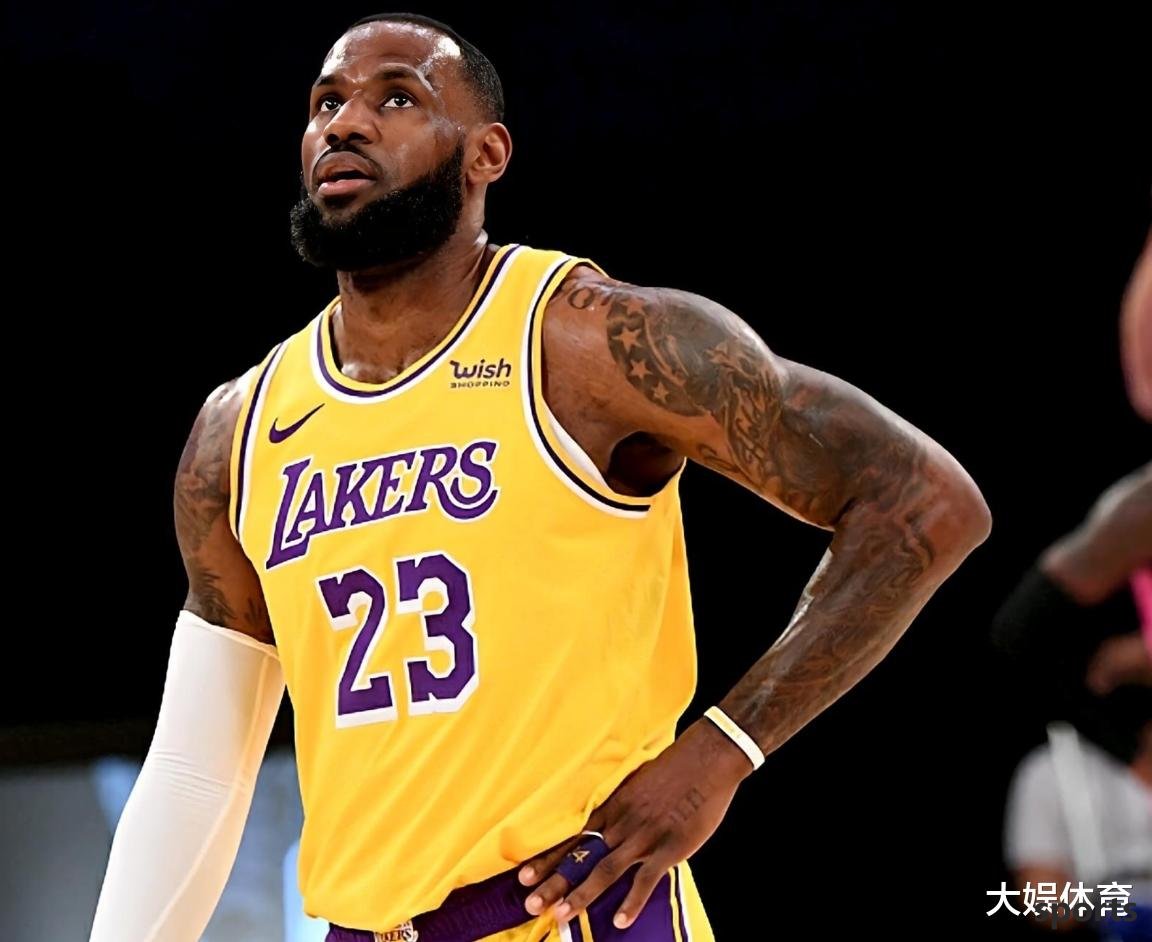James was nicknamed Bulldozer when he was young, why? James didn t shoot at that time
On June 20, LeBron James was nicknamed "bulldozer" by fans and media in his early years in the NBA. This vivid metaphor not only summarizes his unique game style, but also reflects the collision between basketball aesthetics and personal technology evolution in that era. When he was 18 years old in 2003, when he entered the league as the "Son of Chosen", people saw a body carefully carved by God - a height of 2.03 meters and a weight of 118 kilograms, but it has the agility of a defender. The explosive power of 10.4 seconds of a 10-meter sprint and a vertical bounce of more than 110 cm together form a specimen of human athletic ability. This unprecedented physical fitness has turned James' breakthrough into a nightmare for defenders. In the 2005 playoff against the Pistons, the 21-year-old broke through four players in a row at the last moment to complete the final victory. ESPN's slow-motion replay showed that the acceleration of its first step reached 8.3 meters/s², which was equivalent to the G-force at the start of the F1 car. The scout report at that time used "armored vehicle-like breakthrough" to describe his offensive method - when James rushed into the penalty area with the ball, defensive players often need to occupy the position two to three steps in advance, otherwise they will be directly "smashed". In the fifth game of the 2007 Eastern Conference Finals, he won 29 of the Cavaliers' last 30 points, of which 22 were scored from the paint area. In this performance called "The Gods Come to Earth", 11 breakthroughs were completed with the end of the physical confrontation. Technical statistics reveal the terrifying efficiency of the "bulldozer" tactic. In the 2008-09 season, James averaged 14.7 times per game, ranking first in the league, with a score rate of 62.3% per breakthrough, far exceeding Wade's 58.1% and Kobe's 49.8% during the same period. What's even more amazing is that his interfered shooting percentage when completing a layup in the confrontation reached 54%, which was only 7 percentage points lower than in non-confrontational state. This data was not broken until Antetokounmpo's rise. Bathir, the defensive expert at the time, once said helplessly: "Defending James is like trying to stop a fully loaded truck on the highway." , but there is a technical shortcomings behind the "bulldozer" label. In the 2006-07 season, James' three-point shooting percentage was only 31.9%, and his two-point shooting percentage was 34.2%. With the defender letting him go two steps away, his jump shot scored at the bottom of the league in each round. This forced the coaching staff to develop a "4-out 1-in" tactical system, pulling four shooters out of the three-point line, clearing the breakthrough channel for James. When the Magic used "one inside and four outside" joint defense to limit him in 2009, James' three-point shooting percentage plummeted to 27.5%, confirming how the shooting defects were targeted. This violent aesthetic style pays a huge physical price. Sports medicine research shows that James suffered an average of 2.3 "severe collisions" (defined as contact force exceeding 800 Newtons) per game before the age of 23, which is equivalent to experiencing a small car accident every 48 minutes. A 2005 Cavaliers report pointed out that the peak pressure on his knees during the season reached 8-10 times his weight, far exceeding Durant's 4-6 times that of the same period. This explains why he began to lose weight systematically after 2010, gradually dropping from 125 kg at his peak to 113 kg in 2020. The end of the "bulldozer era" began with the 2011 finals defeat. James began to reshape his shooting mechanics when the Mavericks used joint defense and lay-off strategies to limit him to 17.8 points per game. Famous trainer Chris Brickley helped him readjust his shooting angle from 45 degrees to 48 degrees, making his three-point shooting percentage break through the 40% mark in the 2012-13 season. This transformation is epoch-making - when he scored 5 three-pointers in the 2013 Finals G7 defeated the Spurs, Popovich sighed: "We finally met the complete LeBron." From the perspective of sports science, James' technical transformation is an inevitable choice. Research by the University of California, Berkeley shows that NBA players' explosiveness decreases by 1.8% every year after the age of 28, but shooting skills can be maintained until after the age of 35. This explains why he developed new technologies such as back-back jump shots in the later stages of his career. In the 2018 playoffs, his frequency of back-on singles increased by 217% compared with 2008, but his efficiency value increased by 15 percentage points. Looking back at the years of "bulldozers", it is not only the optimal solution under specific technical conditions, but also a live specimen of basketball evolution theory. When modern players follow Curry and practice three-pointers hard, James has proved with his 20-year career that true greatness lies not in sticking to a certain style of play, but in self-innovation in judging the situation. From relying on the body to harnessing technology, from breaking through machines to an all-around commander, the journey itself is more worth remembering than any nickname. 

- Recent Posts
-
- If traded by the Clippers, whe
- Who are the 10 people who have
- After the Nuggets win: Gordon
- The Warriors were 110-117 Timb
- Love s departure team record:
- The Nuggets defeated their opp
- Rockets sign two more! All ope
- The two games are completely d
- Former NBA Clippers center The
- Clay: Whether it is the G Leag
- Hot Posts
-
- How strong is the strongest hi
- Yang Hansen tried out the Warr
- NBA rumor: Kevin Durant believ
- Looking forward! 2025-2026 NBA
- Anthony is rated as the strong
- Replica Legend, Thunder Alexan
- Data analysis: Pacers 2-1 Thun
- NBA Summer United: Yang Hansen
- Yang Hansen s rookie contract
- Magic vs. Free throws: Hallibu
- Durant is destined to join the
- There are good and bad! Team m
- Which NBA team is more suitabl
- NBA character Alexander: The T
- Behind SGA’s Give Up 100 milli
- Hit 10+4+5+3! Yang Hansen made
- After Westbrook jumped out of
- The NBA playoff division final
- After Bill reached a buyout, t
- 2025 Rookie Observation (20):
- search
-
- Links
-
